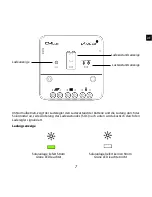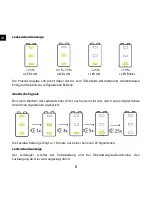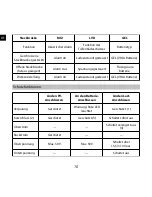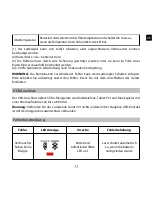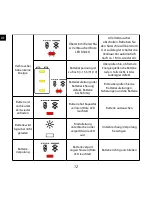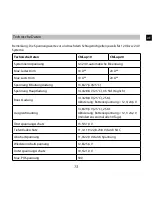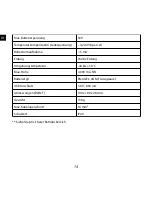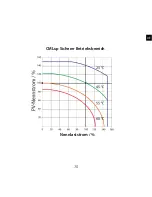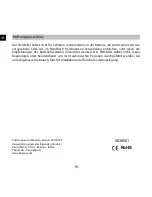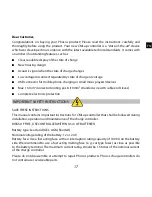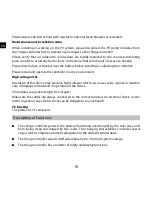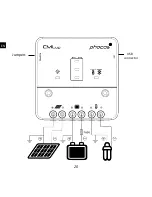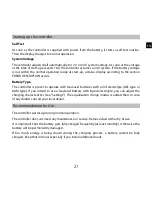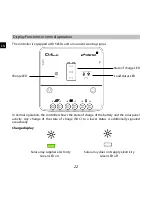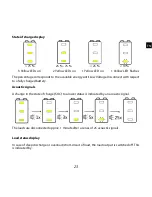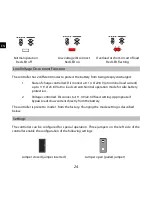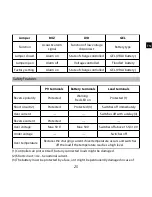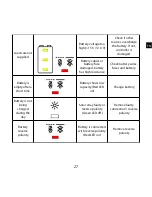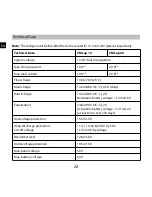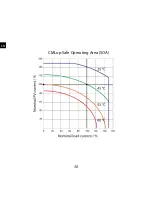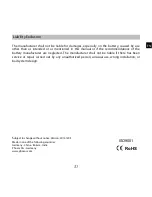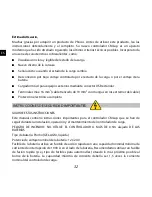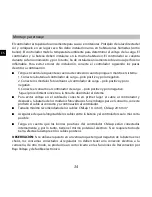
Connecting and Grounding
The controller is intended for indoor use only. Protect it from direct sunlight and place it in a dry
environment. Never install it in humid rooms (like bathrooms). The controller measures the
ambient temperature to determine the charging voltage. Controller and battery must be
installed in the same room. The controller warms up during operation, and should therefore be
installed on a non flammable surface only.
Connect the controller by following the steps described below to avoid installation faults.
Observe the following connection sequence when installing the system:
1. Connect the battery to the charge controller – plus and minus.
2. Connect the photovoltaic modules to the charge controller – plus and minus.
3. Connect the load to the charge controller – plus and minus.
Follow the reverse procedure when uninstalling!
To avoid any voltage on the wires, first connect the wire to the controller, then to the
battery and to the photovoltaic modules. But for the load, first connect the wire to the
load, then to the controller.
Recommended minimum wire size: CMLup 10 : 4 mm
2
; CMLup 20 : 6 mm
2
Make sure the wire length between battery and controller is as short as possible.
Be aware that all positive connections of the CMLup controller are common and therefore
have the same electrical potential. If any grounding is required, always do this on the
positive wire.
REMARK:
If the device is used in a vehicle whose battery negative pole is connected to the
chassis, please make sure that none of the loads connected to the controller has an electric
connection to the car body. Otherwise the load will be short circuited, thus affecting the Low
Voltage Disconnect function and the electronic fuse function of the controller.
REMARK:
Mind the recommendations of your battery manufacturer. We strongly recommend
connecting a fuse directly to the battery to protect any short circuit at the battery wiring. The
fuse must correspond to the nominal current of the charge controller: 15A for CMLup 10 and
30A for CMLup 20.
19
EN
Summary of Contents for CMLup
Page 7: ...5 Steckbr cken USB Anschluss DE Sich erung...
Page 17: ...15 CMLup Sicherer Betriebsbereich Nennlaststrom DE...
Page 22: ...20 EN USB connector Jumpers...
Page 32: ...30 EN CMLup Safe Operating Area SOA...
Page 37: ...35 Puentes Conector USB ES Fusible...
Page 47: ...45 Corriente consumo nominal ES Area de seguridad SOA del CMLup...
Page 52: ...50 Cavaliers Port USB FR Fusible...
Page 63: ...61 Courant nominal charge FR Aire de s curit SOA du CMLup...
Page 68: ...66 Jumpers Conector USB PO Fus vel...
Page 81: ...CMLup USB MP3 16 10 CMLup 0 5m GEL AGM 12 24 V 1 5 79 CH...
Page 82: ...CE CE 12 V 24 V 80 CH...
Page 83: ...1 2 3 CMLup 10 4 mm2 CMLup 20 6 mm2 CMLup 1 5 CMLup 10 15 A CMLup 20 30 A 81 CH...
Page 84: ...82 USB CH...
Page 85: ...12 V 24 V 18 V 24 V 5 LED 83 CH...
Page 86: ...LED LED 84 CH...
Page 87: ...75 25 75 25 10 3 LED 2 LED 1 LED 1 LED 25 1 85 CH...
Page 88: ...LED LED LED CML 1 SOC 11 4 22 8 V 11 9 23 8 V 2 LVD 11 0 22 0 V 1 86 CH...
Page 89: ...BUZ LVD GEL LED 1 2 3 4 50 V 50 V 15 5 31 0V 1 2 4 6 87 CH...
Page 90: ...3 4 200 3 s USB USB 5 V 800 mA USB LED LED 88 CH...
Page 91: ...15 5 31 0 V LED LED LED 89 CH...
Page 94: ...92 CMLup SOA CH...
Page 95: ...20140708 Phocos AG Germany www phocos com 93 ISO9001 RoHS CH...



